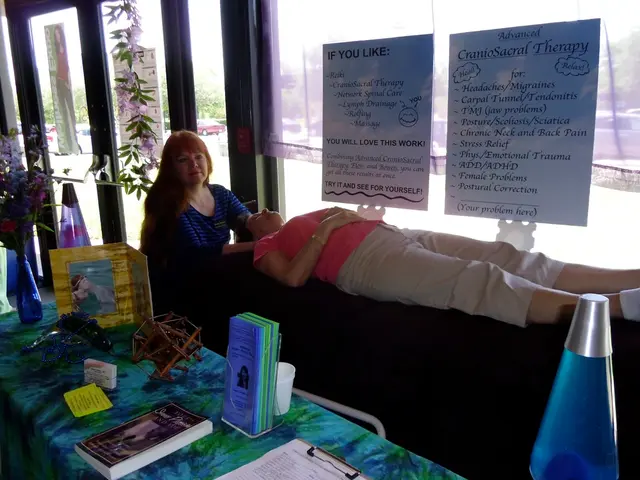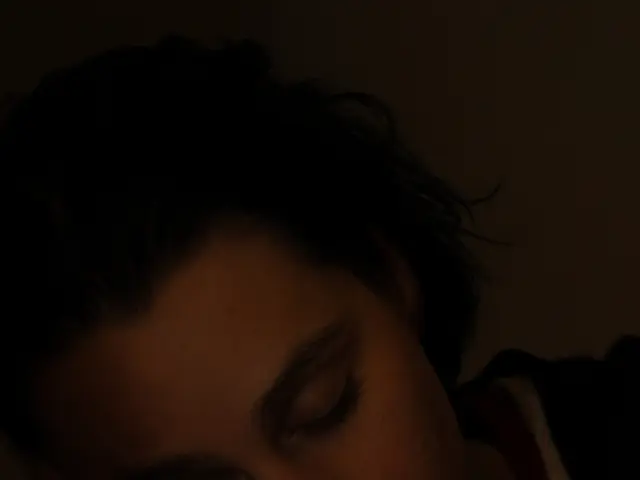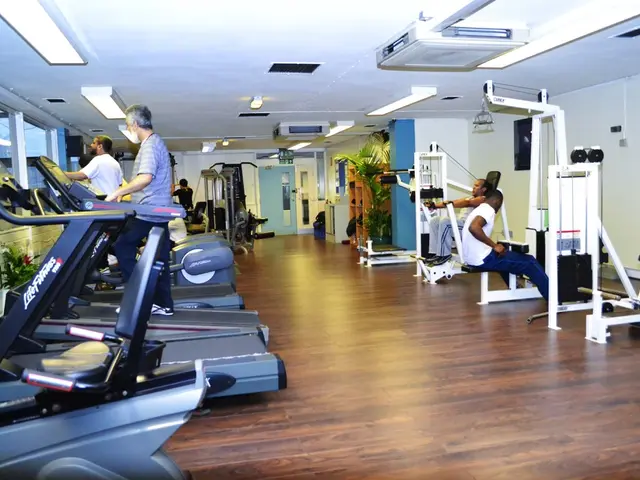Hiding beneath the surface: Strategies for eradicating skin-embedded pimples
Blind pimples, a type of comedo that develops deep within the skin without a head, can be a common and frustrating skin concern for many individuals. Fortunately, there are several effective home remedies available to treat blind pimples without causing scarring or infection.
One such remedy is the use of a warm compress. Applying a warm compress for 10-15 minutes, 2-4 times daily, helps open pores, promote drainage of pus, and relieve pain associated with the blind pimple. This can accelerate healing by bringing the pimple to the surface without squeezing or popping it, which reduces the risk of scarring and infection.
Raw honey, known for its antimicrobial properties, is another effective treatment. Applying a thin layer of raw honey gently to the affected area and leaving it overnight can help reduce bacterial growth and inflammation, supporting natural healing.
Used green tea bags, cooled in the refrigerator, can also be beneficial. The polyphenols in green tea have antimicrobial and anti-inflammatory effects and may help control oil secretion, thus reducing the pimple and preventing further outbreaks.
Aloe vera, with its soothing and healing qualities, is suggested for reducing redness and inflammation without harsh chemicals.
Salicylic acid spot treatments, if accessible, can help unclog pores and accelerate the healing process of blind pimples. However, avoid overuse to prevent skin irritation.
In addition to these remedies, it is crucial to avoid squeezing or picking at the blind pimple, as manipulation can worsen inflammation, cause infection, and increase the likelihood of scarring. Maintaining a gentle skincare routine, using a gentle cleanser and non-comedogenic products, keeping skin hydrated with a light moisturizer, and applying ice or cold compresses can complement other treatments.
It is important to note that there is a lack of research into the effects of topical tea tree oil on humans. Therefore, it is advisable to consult a healthcare professional before using essential oils, especially when considering the quality of a particular brand's products.
Pimple stickers, available from drugstores, can help treat blind pimples by drawing out sebum, absorbing excess oil, reducing inflammation, and significantly reducing the size of blemishes. These discreet and barely noticeable adhesives can be worn overnight or throughout the day.
Regularly washing pillowcases and other items that touch the face can help prevent blind pimples by removing dead skin cells and bacteria that can block pores.
If blind pimples continue to occur regularly or become severe, it may be advisable to consult a dermatologist for further advice. The United Kingdom's National Health Service advises checking with a healthcare professional before using ice packs for skin conditions, and it is also important to do a patch test before trying a new essential oil.
Treatments containing benzoyl peroxide, salicylic acid, sulfur, alpha hydroxy acids (AHAs), retinoids, and other ingredients can help treat acne. However, prescription is not necessarily required for these treatments, although many are also available in prescription strength.
The Food and Drug Administration (FDA) does not monitor or regulate the purity or quality of essential oils. Therefore, it is essential to research the quality of a particular brand's products before using them.
By combining these remedies and precautions, one can effectively treat a blind pimple at home while minimizing the risk of scarring or infection. For more research-backed information and in-depth resources on dermatology, dermatology resources are available online.
- Applying green tea bags, cooled in the refrigerator, can help treat blind pimples due to the polyphenols in green tea that have antimicrobial and anti-inflammatory effects.
- Aloe vera, with its soothing and healing qualities, is a suggested remedy for reducing redness and inflammation associated with blind pimples.
- Raw honey, known for its antimicrobial properties, can help reduce bacterial growth and inflammation on the skin, contributing to the natural healing process of blind pimples.
- Using pimple stickers, available from drugstores, can be beneficial in treating blind pimples by drawing out sebum, reducing inflammation, and significantly reducing the size of blemishes.
- It is essential to maintain a gentle skincare routine by using a gentle cleanser and non-comedogenic products, keeping skin hydrated with a light moisturizer, and applying ice or cold compresses to complement other treatments.
- Salicylic acid spot treatments can help unclog pores and accelerate the healing process of blind pimples, but avoiding overuse can prevent skin irritation.
- In addition to these home remedies, avoiding squeezing or picking at the blind pimple is crucial to prevent worsening inflammation, causing infection, and increasing the likelihood of scarring.




